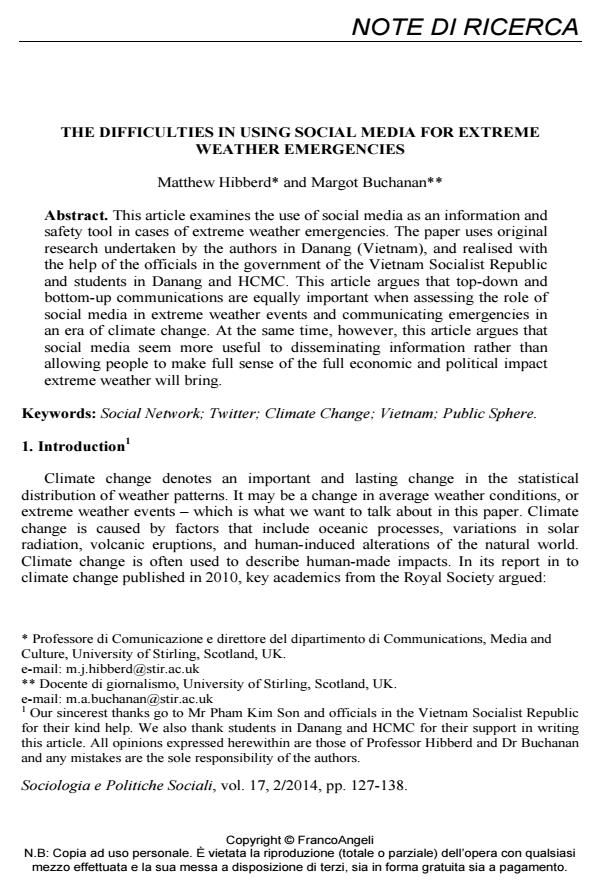The difficulties in using social media for extreme weather emergencies
Titolo Rivista SOCIOLOGIA E POLITICHE SOCIALI
Autori/Curatori Matthew Hibberd, Margot Buchanan
Anno di pubblicazione 2014 Fascicolo 2014/2
Lingua Italiano Numero pagine 11 P. 127-137 Dimensione file 70 KB
DOI 10.3280/SP2014-002008
Il DOI è il codice a barre della proprietà intellettuale: per saperne di più
clicca qui
Qui sotto puoi vedere in anteprima la prima pagina di questo articolo.
Se questo articolo ti interessa, lo puoi acquistare (e scaricare in formato pdf) seguendo le facili indicazioni per acquistare il download credit. Acquista Download Credits per scaricare questo Articolo in formato PDF

FrancoAngeli è membro della Publishers International Linking Association, Inc (PILA)associazione indipendente e non profit per facilitare (attraverso i servizi tecnologici implementati da CrossRef.org) l’accesso degli studiosi ai contenuti digitali nelle pubblicazioni professionali e scientifiche
This article examines the use of social media as an information and safety tool in cases of extreme weather emergencies. The paper uses original research undertaken by the authors in Danang (Vietnam), and realised with the help of the officials in the government of the Vietnam Socialist Republic and students in Danang and HCMC. This article argues that top-down and bottom-up communications are equally important when assessing the role of social media in extreme weather events and communicating emergencies in an era of climate change. At the same time, however, this article argues that social media seem more useful to disseminating information rather than allowing people to make full sense of the full economic and political impact extreme weather will bring.
Parole chiave:Social Network; Twitter; Climate Change; Vietnam; Public Sphere
Matthew Hibberd, Margot Buchanan, The difficulties in using social media for extreme weather emergencies in "SOCIOLOGIA E POLITICHE SOCIALI" 2/2014, pp 127-137, DOI: 10.3280/SP2014-002008